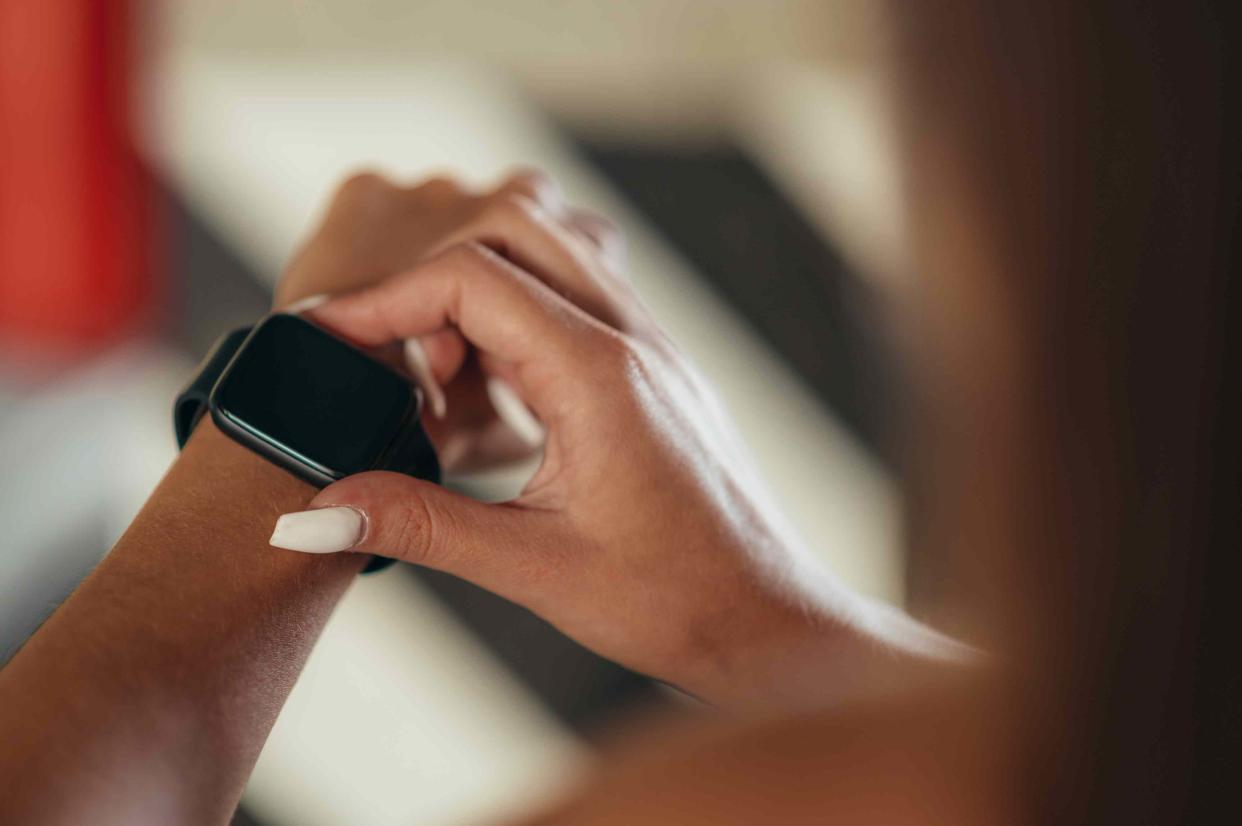Your Smartwatch Can’t Actually Track Glucose Levels

zamrznutitonovi / Getty Images
Key Takeaways
The FDA is cracking down on devices like smartwatches and smart rings that claim to monitor glucose levels noninvasively.
Only a continuous glucose monitor can do this accurately.
While some smart devices may pair with your continuous glucose monitor, none are currently FDA-approved to monitor glucose on their own.
The Food and Drug Administration (FDA) issued a warning late this week to advise consumers, caregivers, and health professionals about the risks of using smartwatches and smart rings to monitor glucose levels.
Accurate glucose monitoring is essential for people living with diabetes.
“Sellers of these smartwatches and smart rings claim their devices measure blood glucose levels without requiring people to prick their finger or pierce the skin. They claim to use non-invasive techniques,” the FDA said in a statement. “These smartwatches and smart rings do not directly test blood glucose levels.”
The devices are manufactured by dozens of companies and sold under multiple brand names. The FDA did not call out any specific brands.
“Regular blood sugar monitoring is the most important thing you can do to manage type 1 or type 2 diabetes, regardless of whether you take medication for diabetes, one dose of insulin or many doses of insulin each day,” Rozalina Mccoy, MD, associate division chief for Clinical Research, Division of Endocrinology, Diabetes, and Nutrition at the University of Maryland School of Medicine, told Verywell. “Using a device that is not accurate can be life-threatening.”
The unauthorized devices may appear to offer the functionality of a continuous glucose monitor, so it’s important to understand what a continuous glucose monitor actually is.
Related: FDA Approves Longest Lasting Continuous Glucose Monitor for Diabetes
Continuous glucose monitors (CGMs) have gained popularity thanks to their ease of use and real-time monitoring, largely surpassing finger-prick blood tests as the most common way to check glucose levels. While they’re more convenient than a finger prick, they’re not totally non-invasive like the smartwatches and rings claim to be. CGMs rely on a sensor that is inserted into an arm or stomach with a small needle.
“Having the ability to constantly and immediately know glucose levels is important to stay within range,” Willa Hsueh, MD, director of the Diabetes and Metabolism Research Center at The Ohio State University Wexner Medical Center, told Verywell. “Knowledge of glucose empowers patients to play a key role in their diabetes control.”
Takeaway
The first continuous glucose monitor, made by Medtronic MiniMed, debuted in 1999. It required calibration with a finger prick and was intended for use in a doctor’s office. By 2006, DexCom introduced its first real-time continuous glucose monitor for individual use.
CGMs measure glucose between cells in the body, displaying glucose levels on a small device or a phone app. CGM devices can cost several hundreds of dollars to purchase, plus $100 or more per month for supplies like disposable sensors. Many health insurers cover costs, supplies may require copays.
Some of the unapproved devices are available online for as little as $40 for a one-time purchase.
The FDA didn’t explain why it is issuing an advisory now, when the fraudulent devices have been on the market for years.
“We are all hoping for noninvasive devices that are accurate and reliable, but so, far none of the devices submitted to the FDA for review have been approved,” Mccoy said.
Related: Wearable Tech to Manage Your Diabetes
Some smart wearables do allow you to integrate your continuous glucose monitor in order to consolidate your health data, like the Oura ring. But the ring itself cannot monitor your glucose levels.
“[Smartwatches and smart rings] are different than smartwatch applications that display data from FDA-authorized blood glucose measuring devices that pierce the skin, like continuous glucose monitoring devices (CGMs),” said the FDA. “The FDA has not authorized, cleared, or approved any smartwatch or smart ring that is intended to measure or estimate blood glucose values on its own.”
The FDA says it is working to put a stop to the illegal marketing of any unauthorized products that claim to measure blood glucose levels.
“We applaud the FDA for bringing this issue to the public and look forward to a day when such non-invasive ways of measuring blood glucose become available,” Robert Gabbay, MD, PhD, chief medical and scientific officer of the American Diabetes Association, told Verywell in an email. “Inaccurate measures for blood glucose can have a potentially devastating impact on people with diabetes. Many use these values to decide on treatment, including insulin, and we know that using an inappropriate amount of insulin can lead to hypoglycemia that can lead to serious consequences, including coma and death.”
What This Means For You
Inaccurate blood glucose measurements can lead to errors in diabetes management, including taking the wrong dose of insulin or other medications.
If you think you’ve had a problem with inaccurate blood glucose measurement or have experienced any adverse events from using an unauthorized smartwatch or smart ring, the FDA encourages you to report the problem through the MedWatch Voluntary Reporting Form.
Read the original article on Verywell Health.

